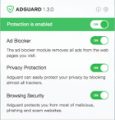What is BrowserBuffer
According to security specialists, BrowserBuffer app is an adware. Adware is short for ‘ad supported’ software. Additionally, some malicious software contains adware or behaves similarly to adware software. The BrowserBuffer adware presents unwanted ads that appear in pop ups or advertising links on web browser. In order to display unwanted advertisements as often as possible it can change your web browser settings. You may even find that the MAC system settings are hijacked without your conscious permission. The creators of adware do so in order to earn profit via third-party ad network. Thus every your click on the advertisements makes profit for them.
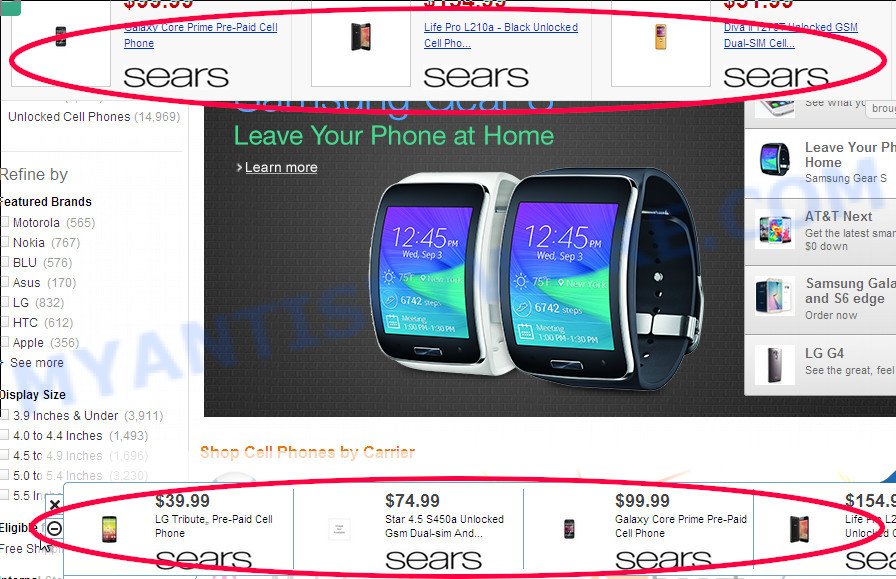
Unwanted ads
Even worse, the BrowserBuffer adware is able to collect lots of confidential information which can be later used for marketing purposes. You don’t know if your home address, account names and passwords are safe.
How does BrowserBuffer get on your MAC system
These days certain freeware developers bundle PUPs or adware with a view to making some money. These are not free software as install an unwanted software on to your Windows MAC OS. So whenever you install a new free programs that downloaded from the Internet, be very careful during setup. Carefully read the EULA (a text with I ACCEPT/I DECLINE button), select custom or manual installation method, reject all bundled applications.
Threat Summary
| Name | BrowserBuffer, “BrowserBuffer 1.0 app” |
| Type | adware software, potentially unwanted application (PUA), Mac virus, Mac malware |
| Detection Names | ApplicUnwnt, OSX.Trojan.Gen, Adware/Adload!OSX, Program:MacOS/Vigram.A, Trojan-Downloader.OSX.Adload, Osx.Adware.Cimpli, Adware.MAC.Generic and MacOS.Agent-MT |
| Distribution | Freeware installers, fake updaters, torrent downloads and malicious pop up advertisements |
| Symptoms | Your web-browser is redirected to web pages you did not want, advertising links appear in places they shouldn’t be, your Apple Mac starts automatically installing unexpected apps, unwanted web browser toolbars, your internet browser start page has modified and you are unable to change it back, your web browser slows to a crawl. |
| Removal | BrowserBuffer removal guide |
How to Remove BrowserBuffer (removal tutorial)
Most often adware software requires more than a simple uninstall through the use of the Finder in order to be fully removed. For that reason, our team designed several removal methods which we have combined in a detailed guidance. Therefore, if you have BrowserBuffer on your MAC and are currently trying to have it deleted then feel free to follow the few simple steps below in order to resolve your problem. Read this manual carefully, bookmark it or open this page on your smartphone, because you may need to exit your web-browser or reboot your Apple Mac.
To remove BrowserBuffer, follow the steps below:
- Remove profiles created by BrowserBuffer
- Uninstall BrowserBuffer related applications through the Finder
- Remove BrowserBuffer related files and folders
- Scan your Mac with MalwareBytes
- Remove BrowserBuffer from Safari, Chrome, Firefox
- How to stay safe online
Remove profiles created by BrowserBuffer
BrowserBuffer can install a configuration profile on the Mac system to block changes made to the browser settings. Therefore, you need to open system preferences, find and delete the profile installed by the adware.
Click Apple menu ( ![]() ) > System Preferences.
) > System Preferences.
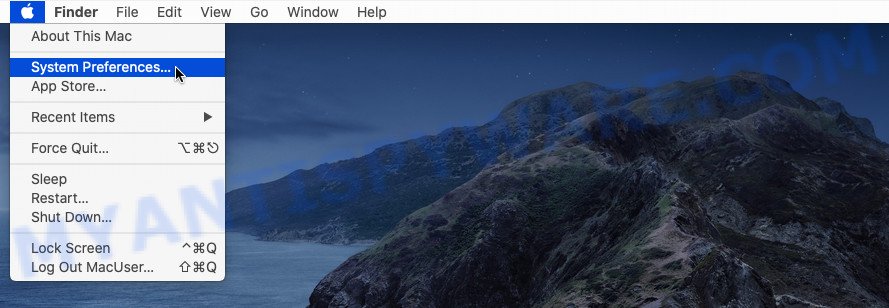
In System Preferences, select Profiles. if there is no Profiles in the list of preferences, that means there are no profiles installed on the Mac device. If there is Profiles in the list, then click on it, then select a profile associated with BrowserBuffer.
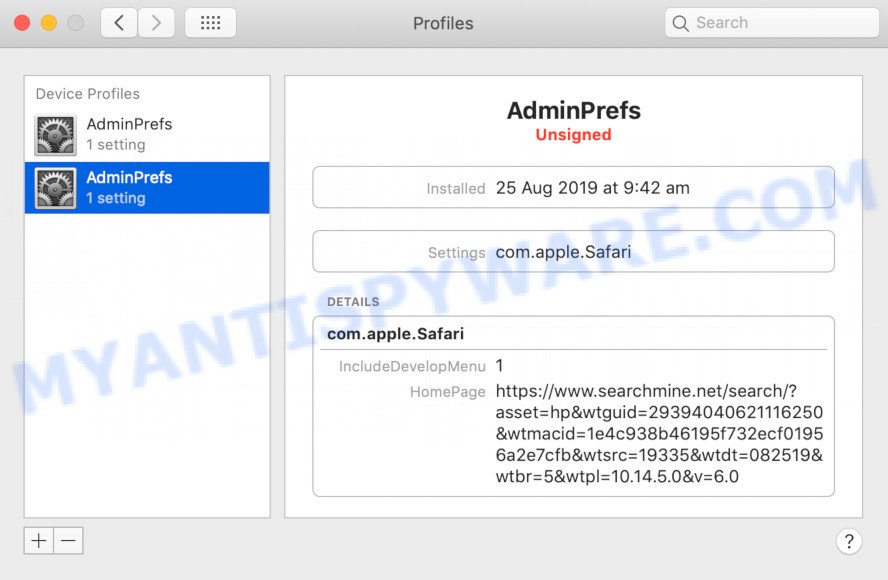
To delete a malicious profile, click on the minus button ( – ) located at the bottom-left of the Profiles screen.
Uninstall BrowserBuffer related applications through the Finder
The next step to remove PUPs, adware and browser hijackers is to uninstall unknown and dubious applications. Using the Finder you can do this quickly and easily. We suggest you not to skip this step, as it often helps to get rid of browser redirects and unwanted ads.
Make sure you have closed all internet browsers and other software. Next, remove any unrequested and suspicious applications from MAC system using the Finder.
Open Finder and click “Applications”.
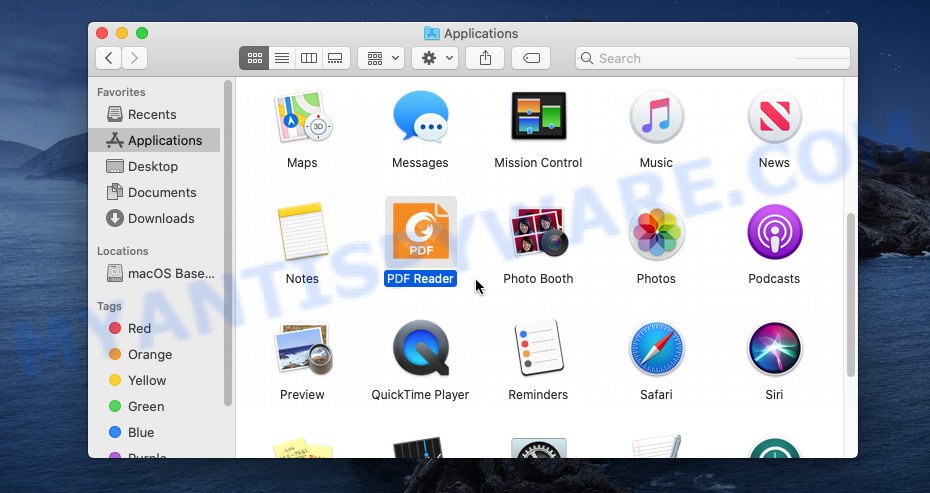
Look around the entire list of applications installed on your computer. Most probably, one of them is the BrowserBuffer adware. Choose the questionable program or the program that name is not familiar to you and delete it.
Drag the questionable application from the Applications folder to the Trash.
Most important, don’t forget, select Finder -> Empty Trash.
Remove BrowserBuffer related files and folders
Now you need to try to find BrowserBuffer related files and folders, and then delete them manually. You need to look for these files in certain directories. To quickly open them, we recommend using the “Go to Folder…” command.
BrowserBuffer creates several files, these files must be found and removed. Below is a list of files associated with this unwanted application.
- /Library/LaunchDaemons/com.BrowserBuffer.system.plist
- ~/Library/LaunchAgents/com.BrowserBuffer.service.plist
- /Library/Application Support/.(RANDOM)/System/com.BrowserBuffer.system
- ~/Library/Application Support/.(RANDOM)/Services/com.BrowserBuffer.service.app
Some files created by BrowserBuffer are hidden from the user. To find and delete them, you need to enable “show hidden files”. To do this, use the shortcut CMD + SHIFT + . Press once to show hidden files and again to hide them. There is another way. Click Finder -> Applications -> Utilities -> Terminal. In Terminal, paste the following text: defaults write com.apple.finder AppleShowAllFiles YES

Press Enter. Hold the ‘Option/alt’ key, then right click on the Finder icon in the dock and click Relaunch.
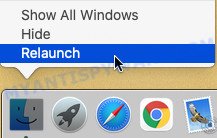
Click on the Finder icon. From the menu bar, select Go and click “Go to Folder…”. As a result, a small window opens that allows you to quickly open a specific directory.

Check for BrowserBuffer generated files in the /Library/LaunchAgents folder

In the “Go to Folder…” window, type the following text and press Go:
/Library/LaunchAgents
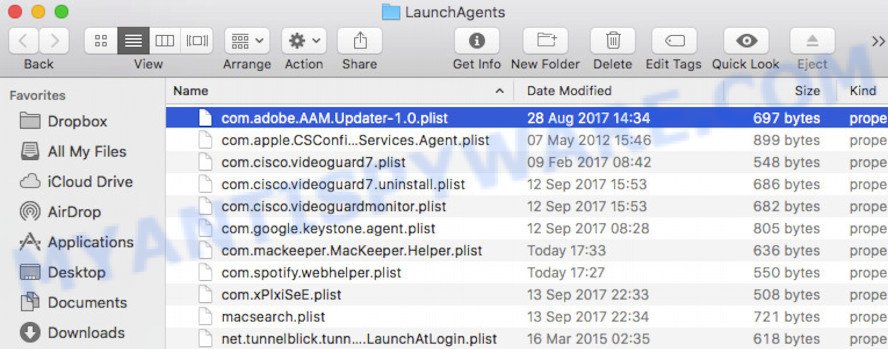
This will open the contents of the “/Library/LaunchAgents” folder. Look carefully at it and pay special attention to recently created files, as well as files that have a suspicious name. Move all suspicious files to the Trash. A few examples of files: search.plist, com.BrowserBuffer.service.plist, installapp.plist, macsearch.plist, com.google.defaultsearch.plist, , com.net-preferences.plist and com.machelper.plist. Most often, adware, potentially unwanted programs and browser hijackers create several files with similar names.
Check for BrowserBuffer generated files in the /Library/Application Support folder

In the “Go to Folder…” window, type the following text and press Go:
/Library/Application Support
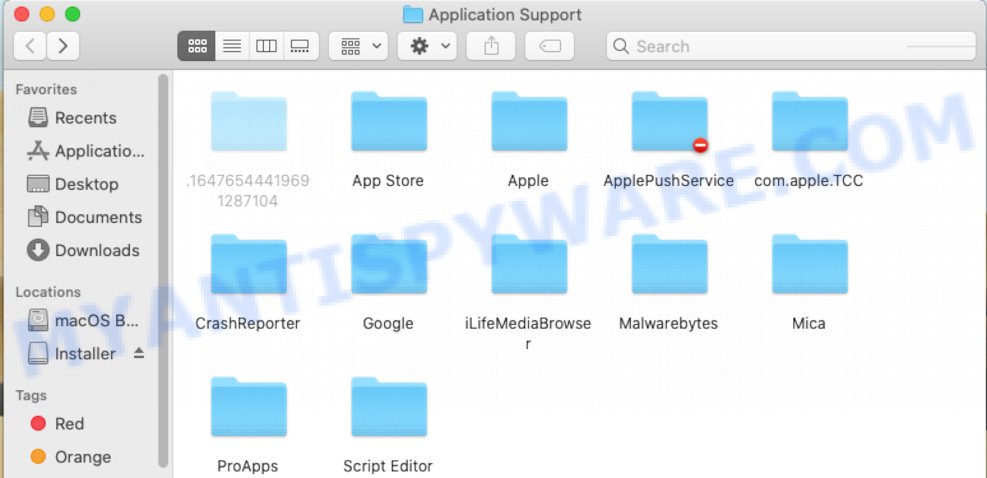
This will open the contents of the “Application Support” folder. Look carefully at its contents, pay special attention to recently added/changed folders and files. Check the contents of suspicious folders, if there is a file with a name similar to com.BrowserBuffer.system, then this folder must be deleted. Move all suspicious folders and files to the Trash.
Check for BrowserBuffer generated files in the “~/Library/LaunchAgents” folder

In the “Go to Folder…” window, type the following text and press Go:
~/Library/LaunchAgents

Proceed in the same way as with the “/Library/LaunchAgents” and “/Library/Application Support” folders. Look for suspicious and recently added files. Move all suspicious files to the Trash.
Check for BrowserBuffer generated files in the /Library/LaunchDaemons folder
In the “Go to Folder…” window, type the following text and press Go:
/Library/LaunchDaemons

Carefully browse the entire list of files and pay special attention to recently created files, as well as files that have a suspicious name. Move all suspicious files to the Trash. A few examples of files to be deleted: com.installapp.system.plist, com.machelper.system.plist, com.BrowserBuffer.system.plist, com.search.system.plist and com.macsearch.system.plist. In most cases, adware software, PUPs and browser hijackers create several files with similar names.
Scan your Mac with MalwareBytes
We suggest using MalwareBytes to scan the Mac device for browser hijackers, PUPs and adware. This free utility is an advanced malicious software removal program created by (c) Malwarebytes lab. This program uses the world’s most popular anti-malware technology. It is able to help you remove malicious software and other security threats from your Mac device for free.
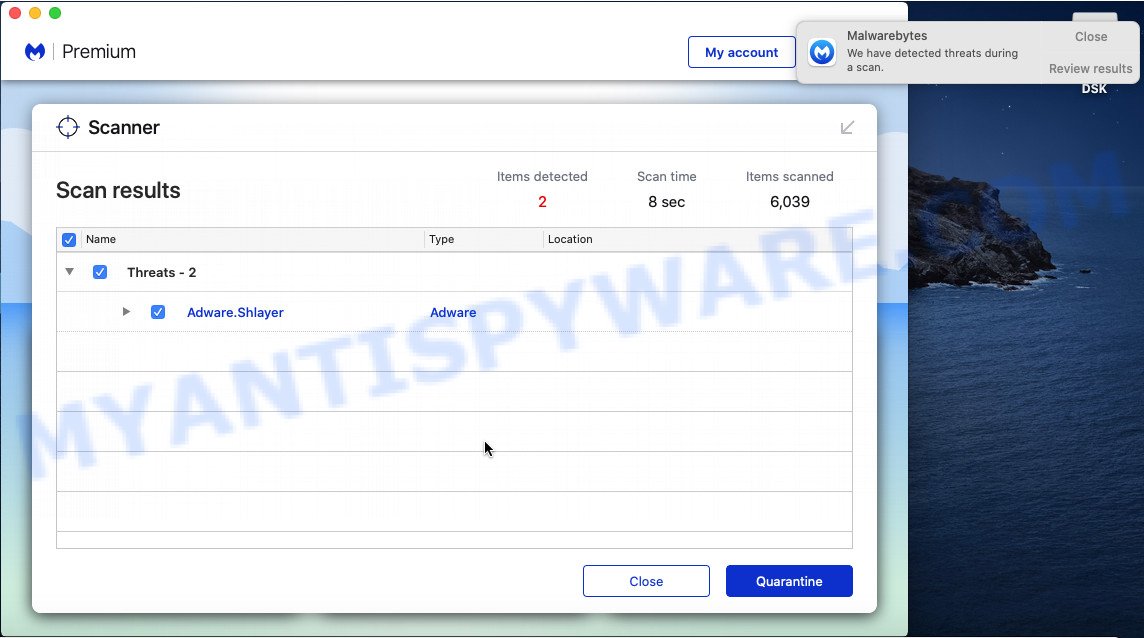
- MalwareBytes Anti Malware (MBAM) can be downloaded from the following link.
Malwarebytes Anti-malware (Mac)
21022 downloads
Author: Malwarebytes
Category: Security tools
Update: September 10, 2020
- When downloading is done, please close all applications and open windows on your Apple Mac. Run the downloaded file. Follow the prompts.
- The MalwareBytes Anti-Malware (MBAM) will open and display the main window.
- Further, press the “Scan” button to begin scanning your MAC for the BrowserBuffer . A system scan may take anywhere from 5 to 30 minutes, depending on your MAC OS. While the MalwareBytes application is scanning, you can see count of objects it has identified as threat.
- Once MalwareBytes completes the scan, MalwareBytes Anti Malware (MBAM) will open a list of all threats found by the scan.
- Review the scan results and then click the “Remove Selected Items” button.
- Close the Anti-Malware and continue with the next step.
Remove BrowserBuffer from Safari, Chrome, Firefox
If you’re still getting BrowserBuffer , then you can try to remove it by deleting harmful extensions.
You can also try to get rid of BrowserBuffer adware by reset Google Chrome settings. |
If you are still experiencing issues with BrowserBuffer removal, you need to reset Mozilla Firefox browser. |
|
How to stay safe online
In order to increase your security and protect your MAC system against new unwanted ads and harmful web-pages, you need to run ad-blocker application that blocks an access to harmful ads and web sites. Moreover, the application can stop the display of intrusive advertising, that also leads to faster loading of websites and reduce the consumption of web traffic.
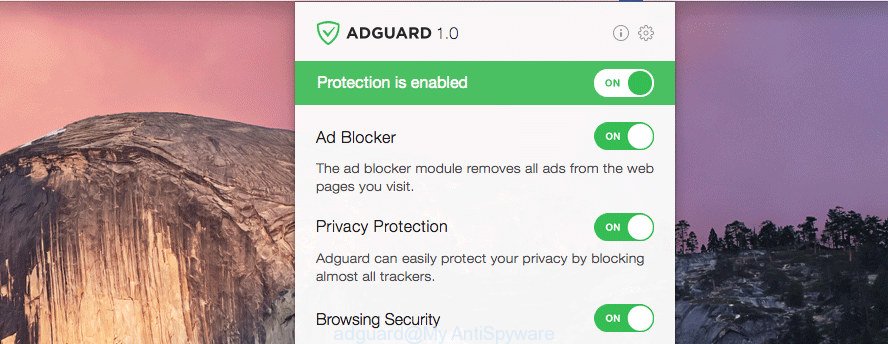
Download AdGuard from the following link.
3782 downloads
Author: © Adguard
Category: Security tools
Update: January 17, 2018
When downloading is complete, run the downloaded file. You will see the “Setup Wizard” screen. Follow the prompts.
Each time, when you launch your MAC, AdGuard will start automatically and stop intrusive popups, block malicious and misleading webpages.
To sum up
Now your machine should be free of the BrowserBuffer adware. We suggest that you keep AdGuard (to help you block unwanted popup advertisements and intrusive harmful websites) and MalwareBytes Anti Malware (to periodically scan your MAC for new adwares and other malware).
If you are still having problems while trying to delete BrowserBuffer from Firefox, Chrome and Safari, then ask for help here here.

